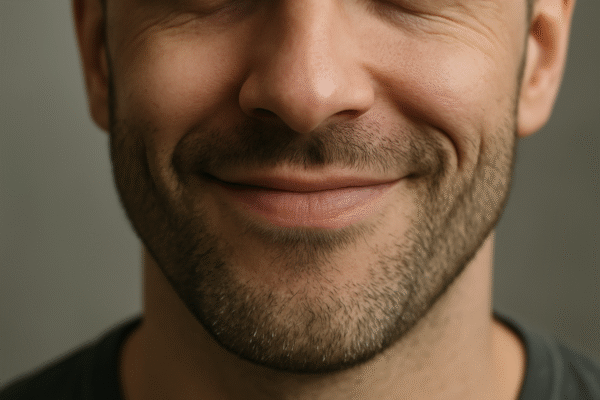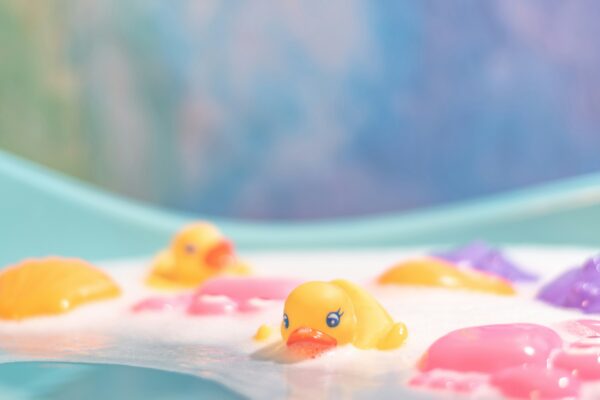During one of my recent workshops on wellbeing, the group naturally moved into discussion about the importance of downtime and self care, which produced some lively conversations about guilty pleasures. They drew me into the chat and I shared with them that one of my guilty pleasures is aftershave.
The first thing people usually notice on my side of our bedroom is the line-up of bottles on their own set of shelves: my aftershave collection, as seen below. I’ve never counted them all (self-preservation, perhaps), but it’s fair to say I’ve drifted beyond what most would call “normal”. My particular weakness is Middle Eastern fragrances – oud, saffron, amber – each one rich, smoky and unapologetically complex.

I still remember my first bottle of oud, bought when I started working in the United Arab Emirates in 2011: it smelled somewhat alien to me, bold and completely unlike the aftershaves I grew up with (who else remembers when CK One was released in 1994?). What began as hesitation quickly turned into fascination – and eventually, something more like a ritual.
During a recent trip to the UAE, I returned with a suitcase that could easily have been mistaken for a mobile perfumery. In some ways, each bottle connects to a different story – some were from long-established Arabic perfume houses, others from newer brands reinventing classic scents. I’m equally drawn to the craftsmanship – the way light plays through coloured glass, the satisfying weight of the bottles, the ornate stoppers that feel like small sculptures. Really, they’re pieces of functional art, although at home the bottles are always stored inside their boxes to stop the fragrance degrading too fast.
It’s not about me only possessing the priciest brands; some of my favourites are firmly at the ‘reasonably priced’ end of the spectrum, they just happen to smell great (even if the smell doesn’t last as long as the more expensive ones). I also love the fact that I’ve infected our teenage son with my love of smelling good, he has more aftershaves than the average 14-year-old, I suspect. Over time, my growing collection has become more than a habit. I think that it mirrors a deeper evolution – one around masculinity and self-care.
For years, I kept my interest in fragrances quiet. Real men, I told myself, weren’t meant to care this much about smells! The socially acceptable norm seemed to be one bottle of aftershave, replaced at Christmas, worn sparingly. Anything beyond that felt self-indulgent or even frivolous.
That quiet shame points to a much bigger issue: we’re often taught to see self-care through a gendered lens. “Guilty pleasures” are only guilty because they don’t fit within a prescribed box. While research consistently shows that personal rituals boost mental wellbeing, men still get subtle (and not-so-subtle) messages that caring for themselves is somehow unmanly. We’re encouraged to pursue wellbeing – but only if it involves protein shakes, cold plunges, or a 5am run.
Meanwhile, the modern self-care movement has its own blind spots. Scroll through Instagram with the hashtag #SelfCare and you’ll find endless shots of candle-lit bubble baths with prosecco, face masks with cucumber-topped eyes and towel turbans. All lovely, but also a bit narrow. For decades, marketing framed self-care as a feminine pursuit, leaving men with a stripped-down “no fuss” version that prized efficiency over enjoyment. The result is that we’ve created a false binary: indulgence versus practicality, feminine versus masculine.
True self-care really doesn’t sit neatly on either side. It’s deeply personal – sometimes reflective, sometimes playful, often delightfully weird. For some, it might be a lavender bath with candles flickering on the edge of the tub. For others (like me), it’s that quiet moment each morning when I choose an aftershave that matches my mood. It’s a small act of mindfulness disguised as grooming: a chance to pause, breathe and prepare for the day ahead.
Each fragrance I own holds a little spark of confidence and calm. It’s not just about smelling good – it’s about feeling centred, grounded, and a little more myself. Yes, the collection represents an investment, but I’ve come to see it as exactly that: an investment in wellbeing, in joy, in the ability to start the day with intention rather than on autopilot.
The real guilt isn’t in what brings us comfort – it’s in allowing narrow definitions of masculinity or femininity to decide what counts as self-care. Whether your reset comes from aftershave, model trains, crochet or a candle-lit bath (cucumber slices optional), what matters is that it genuinely fuels you.
So here’s my question for you:
When was the last time you did something that made you feel fully, unapologetically yourself – without worrying whether it fits the mould?




